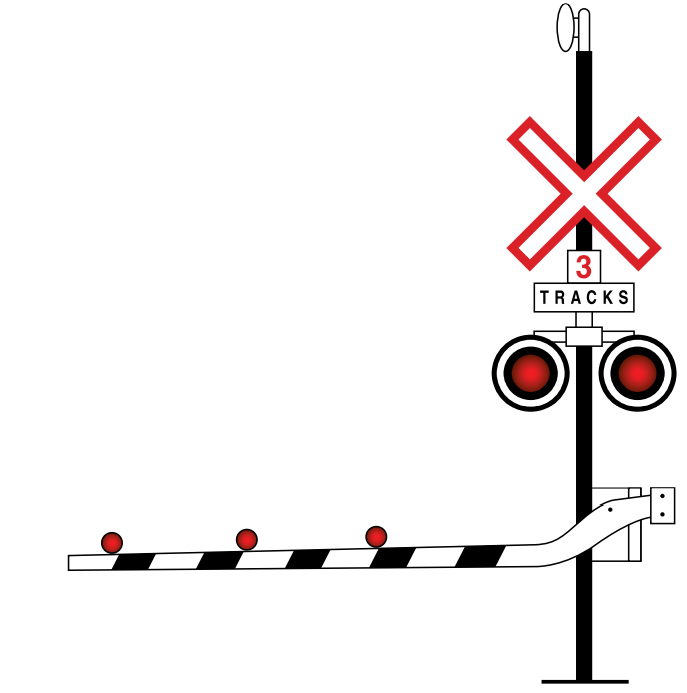Railway Crossings

Railway Crossings
Drivers should check for trains at every crossing, even those equipped with automatic signals. Always proceed with caution when crossing railway tracks.
Never get trapped on a crossing
When traffic is heavy, wait on the approach to a crossing until you are sure you can clear it.
When the last car of a train passes the crossing, do not start up until you are sure no train is coming on another track, especially from the other direction.
Never race a train
Racing a train to the crossing is foolhardy. You may lose.
Avoid shifting gears on a crossing
If your vehicle has a manual transmission, shift down before the crossing.
Watch for vehicles that must stop at crossings
Be prepared to stop when you are following buses, school buses or large trucks that are required to stop.

Automatic protected crossings
Never drive around gates
If the gates are down, do not cross the tracks until the gates are raised. It is against the law to go around crossing gates.
Flashing lights
At crossings without gates, you may cross the tracks, after stopping, while the red lights are flashing if it is safe to do so. However, if a train is closely approaching, or if a signal person
signals you to stop, you must stop and wait until it is safe to proceed. Some railway crossings may have an advance flashing amber (yellow) light and sign warning of a train ahead at a concealed crossing.

